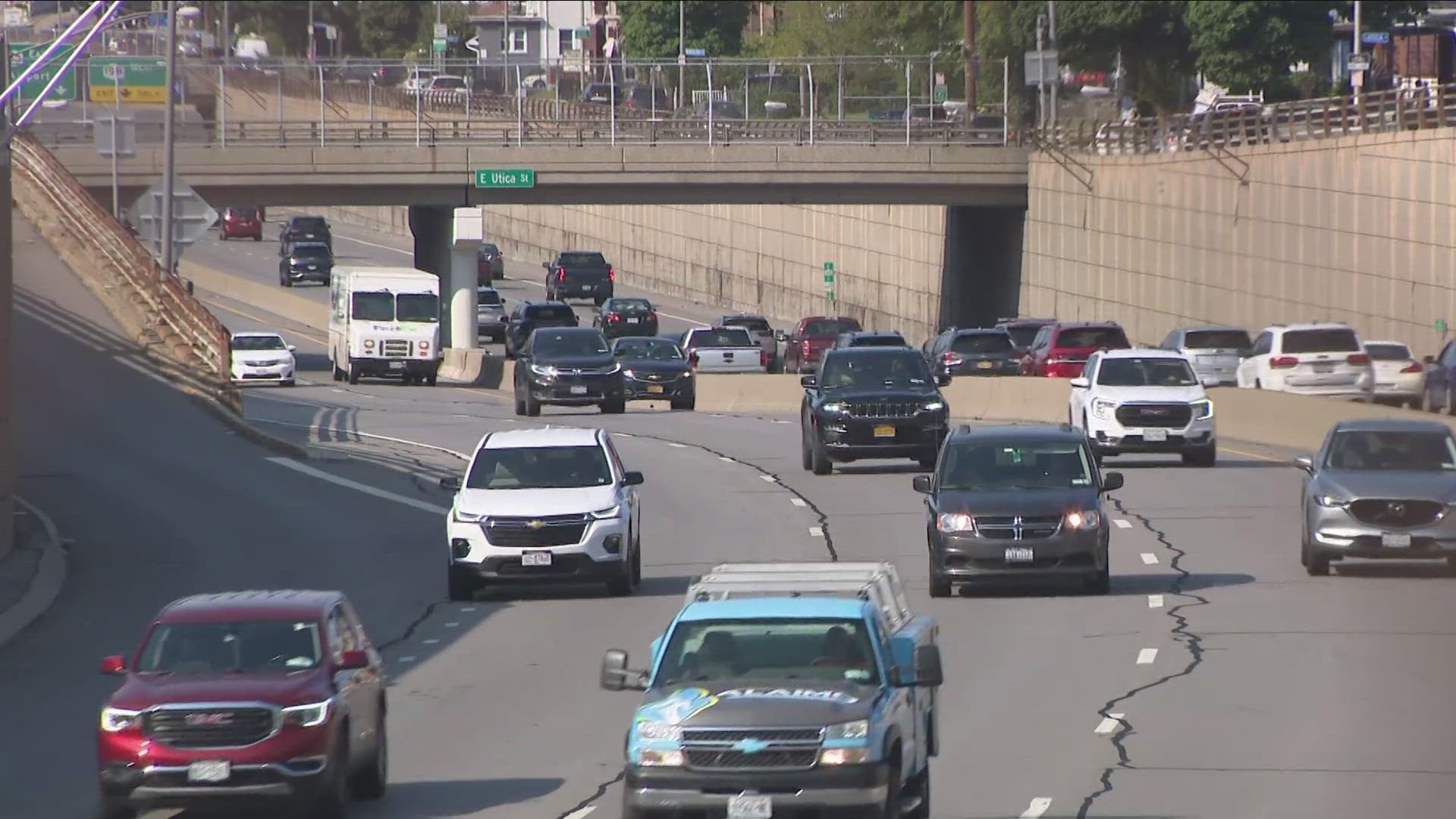BUFFALO, N.Y. — Earlier in September, the New York State Department of Transportation formally responded and answered the claims in the lawsuit filed by several community groups and people who live on or near Humboldt Parkway.
In that filing, the NYSDOT asked Judge Emilio Colaiacovo to dismiss the case.
On Wednesday, attorney's who represents the various groups and residents, filed his response to the NYSDOT's answers.
"Respondents (NYSDOT) would have this Court believe that the Project is the best thing 'since sliced bread' with significant community support that went through a comprehensive and thorough environmental review, which achieved all that would or could be achieved by an EIS with a 35,000 page record to prove it," the filing says. "Nothing could be further from the truth."
2 On Your Side spoke to attorney Adam Walters, one of the lawyers representing the residents and groups, by phone on Friday afternoon.
"It's very clear that there were some significant mistakes that the NYSDOT made in its environmental review," Walters said. "There were a number of issues that they were really required to examine, analyze and develop mitigation plans for, and they just completely failed to do it."
One of those mitigation plans the NYSDOT failed to do was analyze the impact of traffic on roadways adjacent to the project.
"They acknowledge in their papers that there'll be significant traffic disruptions during construction," Walters says. "We're talking about two to three mile backups on the Kensington expressway every day, with road roads around the Kensington intersection starting to fail and operating at failing levels of service."
The NYSDOT plans to keep two lanes of Route 33 open during the construction of the tunnel. There are only nine mentions of traffic congestion in the final Environmental Assessment published by the NYSDOT — none of those mentions are related to congestion related to the construction of the tunnel.
"They basically have one line in the environment, entire environmental review that says there are going to be some traffic delays," Walters said.
That sentence reads "temporary effects to vehicular traffic could include travel delays and increased traffic on adjacent local roads" and is found on page 302 of the DDR/EA.
"They were really required to disclose what those traffic delays were, do a hard look at how those delays can be mitigated," Walters said.
One of the examples outlined in the NYSDOT's response to the lawsuit as a reason no additional environmental reviews are needed was the new Bills Stadium. An EIS was not required for that project because it was determined that a stadium would not have a significant impact on the environment."
"I think they just picked another 'big project', and said 'well, the stadium got a negative declaration, so we should get one too," Walters said. "There are significant differences between that project and the Kensington that really undermine their argument that just big projects can get negative declarations under the environmental review statute."
Walters was retained by Erie County to guide them through the environmental review process for the new Bills Stadium.
The main difference between the stadium and Kensington project, according to Walters, is the stadium isn't being built adjacent to dense urban neighborhoods.
"You've got residences, churches, medical facilities, etc., all along Humboldt Parkway, those things are less than 50 feet from the construction zone," Walters said. "When you talk about the stadium, it really is apples to a toaster oven."
In its response to the initial complaint, the NYSDOT admitted that the $1B tunnel will create and release 36,620 metric tons of GHG emissions over the four and a half years of construction.
"If a newly proposed factory applied for an air permit from NYSDEC to emit 36,620 metric tons of GHG emissions in this same neighborhood, there can be little doubt that the application would be denied based on the mandates of the CLCPA," attorney's said in their response to the NYSDOT. "It is mind boggling hypocrisy,"
2 On Your Side reached out to the NYSDOT for comment on this story. A spokesperson asked WGRZ for the questions they want answered and WGRZ replied with specific questions, which is normally not standard operating procedure ahead of an interview.
Despite receiving the questions, the NYSDOT has failed to respond to our questions.
Attorney's for residents and community groups, along with the NYSDOT, will appear in court to begin arguments on Oct. 25.

